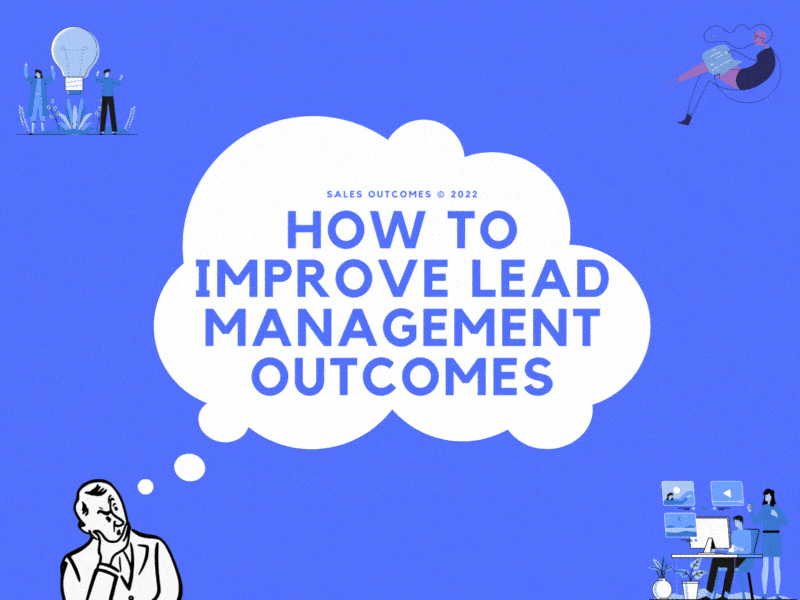How to Improve Lead Management Outcomes

Lead management is the process that unites marketing and sales efforts.
Despite its importance, lead management often falls short. According to a report from The Economist Intelligence Unit, only 22% of B2B organizations feel they are effective at lead management.
One of the reasons lead management efforts don’t produce the desired results is that leads may not be of good quality. Poor quality leads happen for several reasons, including poor marketing targeting or messy CRM system data.
Another common problem is that Lead Management Processes are not well designed or followed. For example, a study by Forrester found that 54% of companies do not have a Lead Management Process. Even when they exist, they are often not appropriately followed, with salespeople skipping steps or failing to hand off leads promptly.
We’ve learned that increasing lead quality and quantity won’t make much difference unless the organization addresses why lead management falls short.
Three Areas That Contribute to Poor Lead Management Outcomes
Sending leads to salespeople they don’t think are good leads.
Marketing’s definition of a qualified lead must be embraced and confirmed by the sales team. The improved alignment may lower the number of Marketing Qualified Leads (MQLs), but you’ll likely see a meaningful increase in Lead conversion to Sales Qualified Leads (SQLs). Pro Tip: Define a qualified lead and ensure that leads meet these criteria before they are sent to sales.
Sending a lead record to sales without unifying other lead and contact records in the CRM
All too often, a lead record may also exist as a contact or lead record in the CRM. Unless salespeople are skilled at CRM research, they often don’t leverage information in other CRM records that can help them advance the sales process. Marketing qualification processes should include unification (merge) or indication of related records so the salesperson can action the lead faster. Pro Tip: Add a process step where an internal admin role searches for existing or duplicate records, and then have them add a brief note and links for the salesperson.
No process for sales to give back leads to marketing.
There will always be a portion of MQLs that the salesperson cannot reach or convert to SQL. A robust process is needed to inform marketing on re-engaging or nurturing leads on the salesperson’s behalf. The big idea here is to make it easy for the salesperson to communicate with marketing so they can add leads to nurture cycles. Pro Tip: Establish lead status values that allow a salesperson to share lead records with marketing that could benefit from marketing nurture activities.
Here’s The Bottom Line
Lead management is the essential business function that bridges marketing and sales through a combination of people, processes, and automation.
It’s more important than ever to ensure the sales and marketing teams align on the lead management process.
Your organization can achieve meaningful improvements in sales pipeline growth if you address the areas that contribute to poor lead management outcomes.